Question
Which of the following statement(s) is/are
false? Read the following information carefully and answer the questions given below. Eight members – M, N, O, P, Q, R, S and T of a family consists of three generations and were seated in a circular table facing centre, in which no three males were seated together. Each of them had a relationship with M. All of them attend the seminar in a different month from April to November. No two persons attend the seminar in the same month. It is further known that either both or none of the parents are alive. Two persons were seated between P and M’s father and neither of them attends the seminar in November. The one who was seated second to the left of P attend the seminar in May. Q is married to the only sister of the one who attends the seminar in June and was seated to the immediate left of M’s daughter. Two persons were seated between N and M’s wife. Only one female attend the seminar after June. Two persons were seated between M and the one who attend the seminar in September. S and her brother attend the seminar in consecutive months. Two persons attend the seminar between P and R. T attend the seminar in August. M and his father were immediate neighbours. O, who is the son of M was seated to the immediate right of his sister and attend the seminar after M but not immediately. The one who attends the seminar in September is nephew to P and both were seated adjacent to each other. Q is from 1st generation. P is not the brother of M’s wife. Two persons were seated between Q and the one, who attended the seminar June. The one, who attended the seminar in May doesn’t face the one, who attended the seminar June. O and P are not neighbours.Solution
Two persons were seated between P and M’s father and neither of them attends the seminar in November. The one who was seated second to the left of P attend the seminar in May. 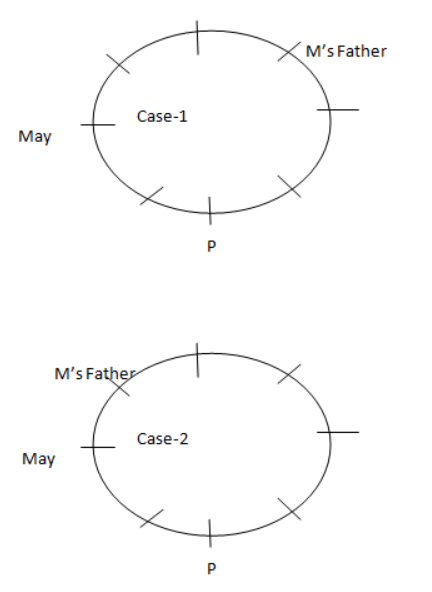 M and his father were immediate neighbours. Two persons were seated between M and the one who attend the seminar in September. The one who attends the seminar in September is nephew to P and both were seated adjacent to each other.
M and his father were immediate neighbours. Two persons were seated between M and the one who attend the seminar in September. The one who attends the seminar in September is nephew to P and both were seated adjacent to each other. 
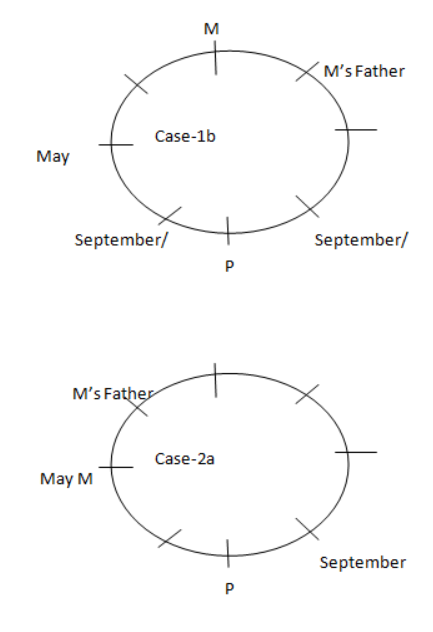
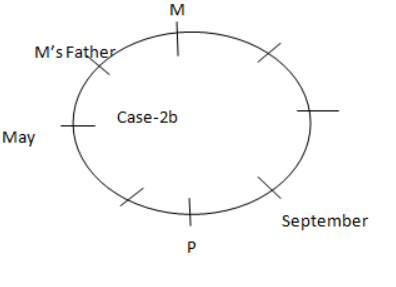 O, who is the son of M was seated to the immediate right of his sister and attend the seminar after M but not immediately. Q is married to the only sister of the one who attends the seminar in June and was seated to the immediate left of M’s daughter. Two persons were seated between N and M’s wife. Q is from 1st generation. P is not the brother of M’s wife. Two persons were seated between Q and the one, who attended the seminar June. The one, who attended the seminar in May doesn’t face the one, who attended the seminar June. O and P are not neighbours. Two possibilities in blood relation.
O, who is the son of M was seated to the immediate right of his sister and attend the seminar after M but not immediately. Q is married to the only sister of the one who attends the seminar in June and was seated to the immediate left of M’s daughter. Two persons were seated between N and M’s wife. Q is from 1st generation. P is not the brother of M’s wife. Two persons were seated between Q and the one, who attended the seminar June. The one, who attended the seminar in May doesn’t face the one, who attended the seminar June. O and P are not neighbours. Two possibilities in blood relation. 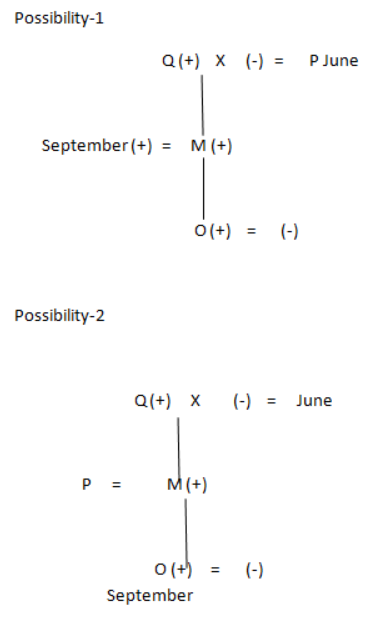
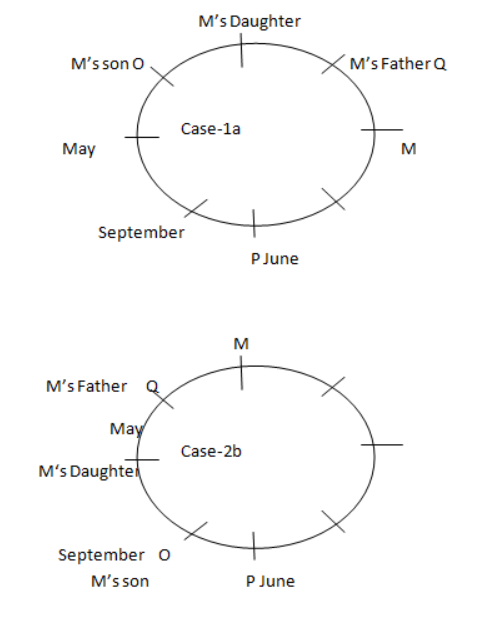 Hence, case 1b and case 2a are invalid because O was seated to the immediate right of M’s daughter and Q was seated to the immediate left of M’s daughter. Case 2b is invalid because P cannot attend the seminar in June (possibility 2 of blood relation diagram) So, possibility 2 of blood relation diagram is invalid.
Hence, case 1b and case 2a are invalid because O was seated to the immediate right of M’s daughter and Q was seated to the immediate left of M’s daughter. Case 2b is invalid because P cannot attend the seminar in June (possibility 2 of blood relation diagram) So, possibility 2 of blood relation diagram is invalid. 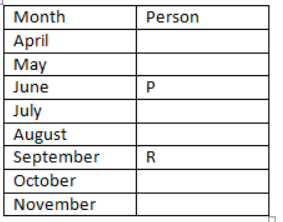 Only one female attend the seminar after June. S and her brother attend the seminar on consecutive months. Two persons attend the seminar between P and R. T attend the seminar in August.
Only one female attend the seminar after June. S and her brother attend the seminar on consecutive months. Two persons attend the seminar between P and R. T attend the seminar in August. 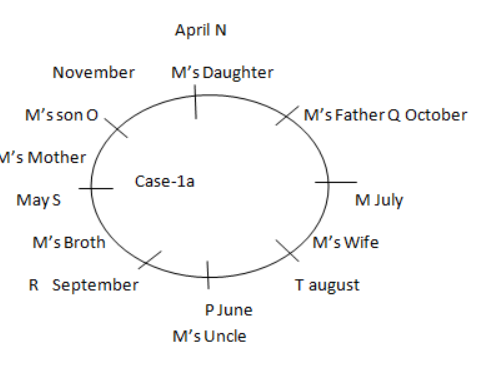 So, the final solution is
So, the final solution is 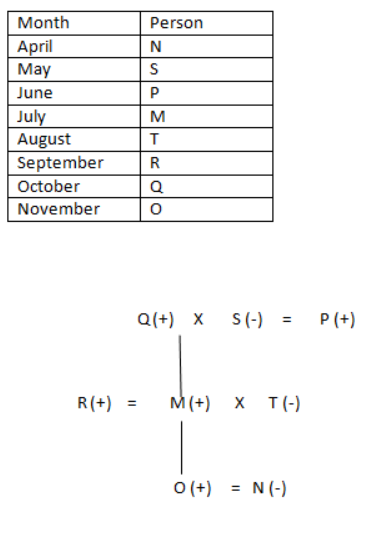
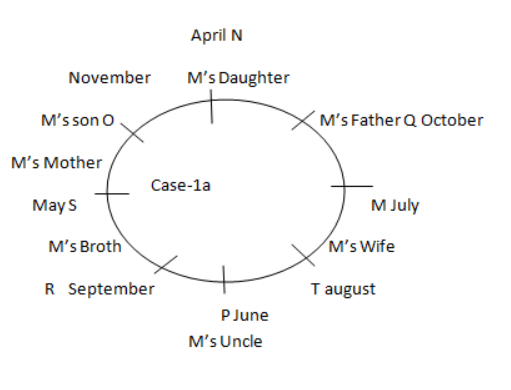
इस वाक्य का सही हिन्दी अनुवाद चुनें
The Government has decided t...
निम्नलिखित में से जांच परिणाम शब्द का वित्तीय शब्�...
रहस्यपूर्ण शब्द का उचित विलोम छांटिए
निम्नलिखित में से Tally clerk का हिंदी में सही अर्थ क्या है ?
नीचे दिए गए शब्दों में से कौन सा आगमन‘ शब्द का पर्याय नहीं...
Choose the Hindi word closest in meaning to the following English words :
Indigenous
निम्नलिखित में से Disposing off शब्द का वित्तीय शब्दावली में ...
निम्नलिखित विकल्पों में से Henceforth का हिंदी पर्याय नहीं �...
Mother economy का बैंकिंग शब्दावली के अनुसार सही हिन्दी पर्याय चुन...
इस विसंगित को दूर करने संबंधी प्रस्ताव स्वीकार कर लिय�...
Relevant for Exams:


